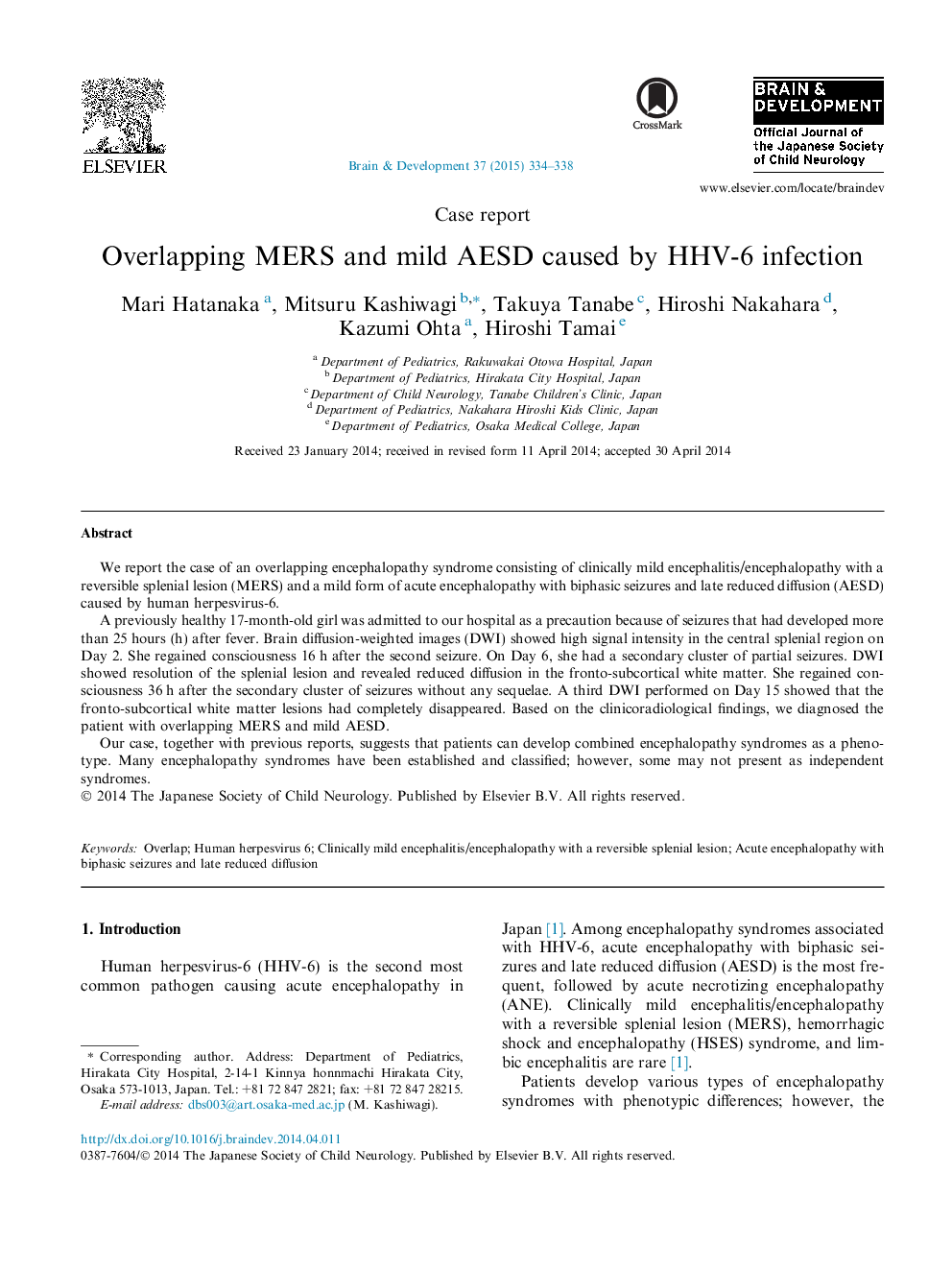| Article ID | Journal | Published Year | Pages | File Type |
|---|---|---|---|---|
| 3036784 | Brain and Development | 2015 | 5 Pages |
We report the case of an overlapping encephalopathy syndrome consisting of clinically mild encephalitis/encephalopathy with a reversible splenial lesion (MERS) and a mild form of acute encephalopathy with biphasic seizures and late reduced diffusion (AESD) caused by human herpesvirus-6.A previously healthy 17-month-old girl was admitted to our hospital as a precaution because of seizures that had developed more than 25 hours (h) after fever. Brain diffusion-weighted images (DWI) showed high signal intensity in the central splenial region on Day 2. She regained consciousness 16 h after the second seizure. On Day 6, she had a secondary cluster of partial seizures. DWI showed resolution of the splenial lesion and revealed reduced diffusion in the fronto-subcortical white matter. She regained consciousness 36 h after the secondary cluster of seizures without any sequelae. A third DWI performed on Day 15 showed that the fronto-subcortical white matter lesions had completely disappeared. Based on the clinicoradiological findings, we diagnosed the patient with overlapping MERS and mild AESD.Our case, together with previous reports, suggests that patients can develop combined encephalopathy syndromes as a phenotype. Many encephalopathy syndromes have been established and classified; however, some may not present as independent syndromes.
